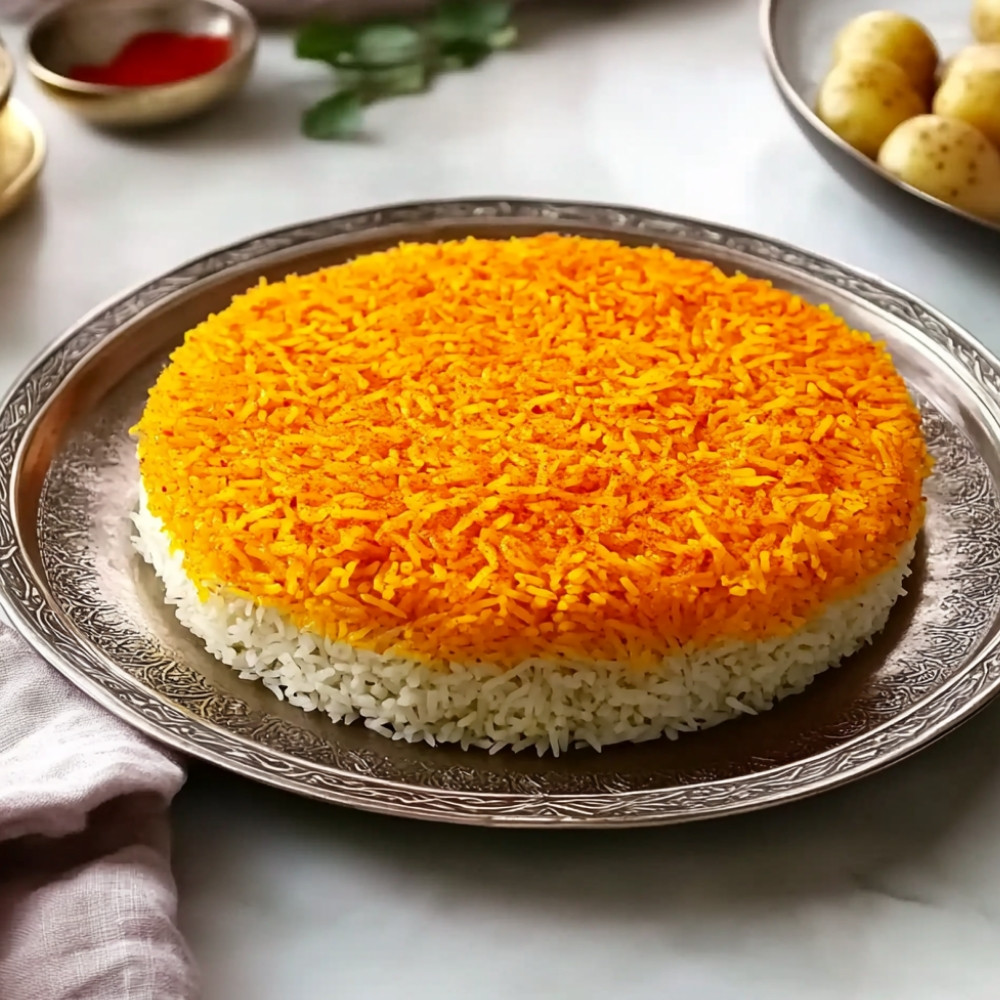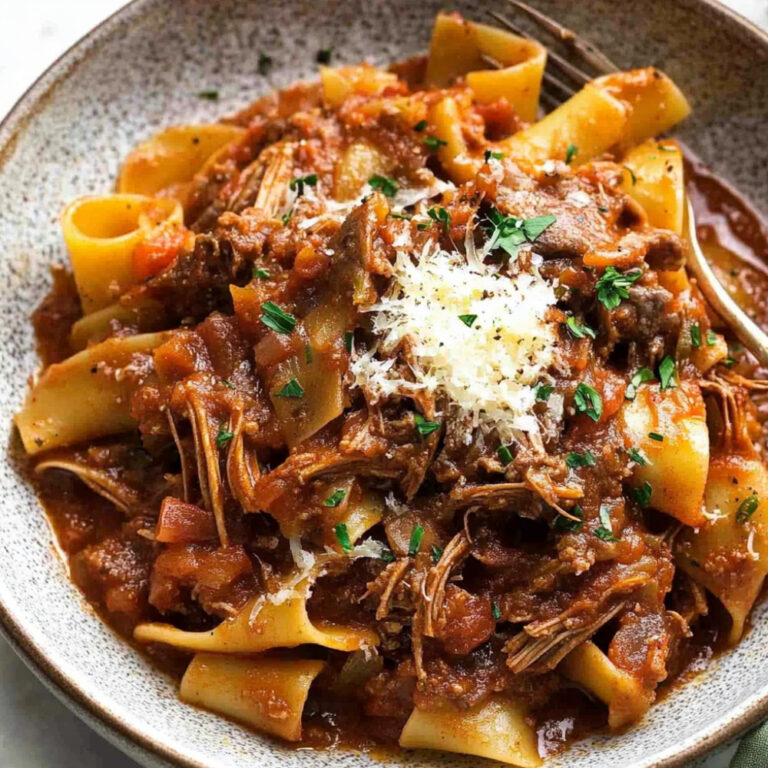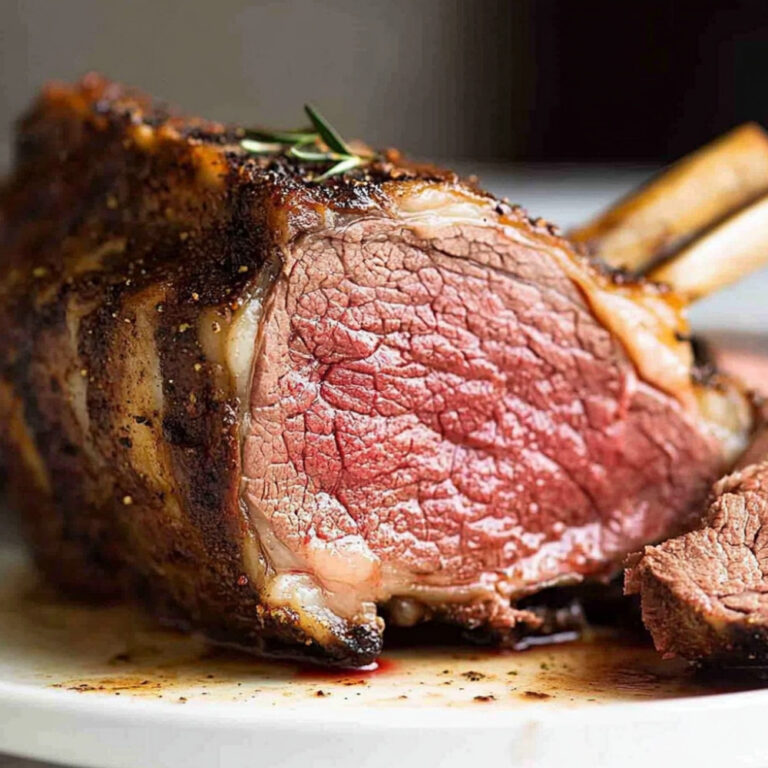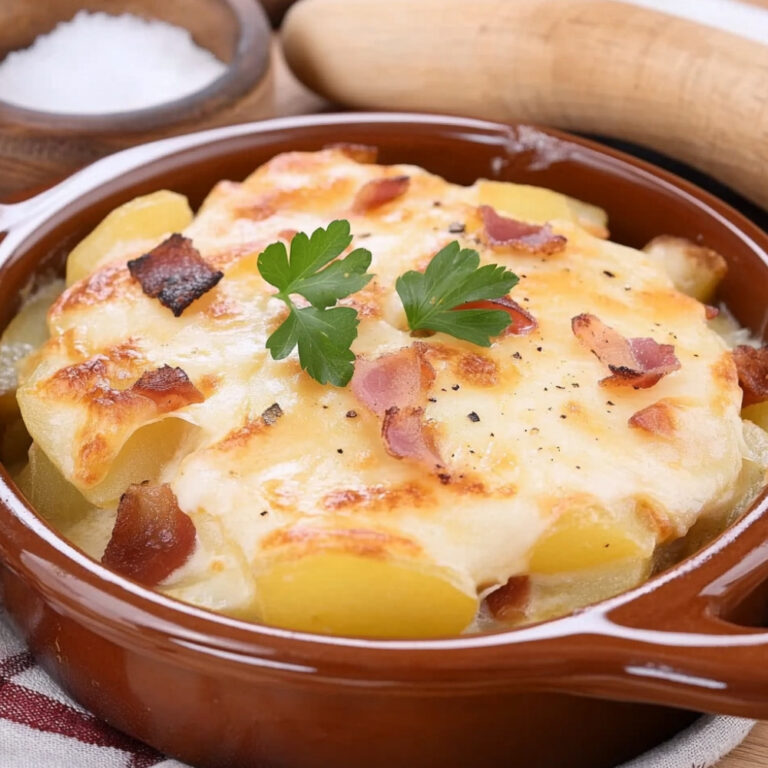Tahdig Recipe
There’s just something about that first crackle when you flip a pot of freshly cooked tahdig that makes your heart skip a second. It’s earthy, golden, edges a little uneven from the steam and time. The scent is cozy and homey and just slightly nutty, like toasted bread and sunshine and something quietly celebratory. I’ve never quite been able to make it without hovering a little too close to the stove, checking the bottom too early… but then again, that’s half the charm of it, isn’t it? It asks you to pay attention. It teaches patience. And then it surprises you with all that crunch.
Why You’ll Crave It
- It’s not just rice – it’s texture, drama, and flavor all in one deceptively simple dish
- Crispy saffron-kissed bottom that’s wildly addictive (you’ll want to pry every last shard)
- Pairs perfectly with almost anything, but also somehow satisfying on its own
- Makes you feel like you’ve accomplished something deeply old-world and beautiful
- Feeds both your belly and your pride – especially when it flips out clean
The first time I made this, I hovered nervously with a spatula for ten minutes before flipping… I still held my breath, but it came out golden and whole, and I think I cried a little.
What You’ll Need
- 2 cups basmati rice: long-grained, fragrant, and always rinsed until the water goes clear
- 3 cups water: for the initial boil, don’t guess – measure
- 1 tablespoon salt: plenty to season the rice, don’t skimp here
- 1/4 cup vegetable oil or butter: enough to coat the bottom of the pot generously
- 1/4 teaspoon saffron: crushed and bloomed in 1 tbsp warm water (optional, but lovely)
- 1 tablespoon lemon juice: optional – adds a bright edge some really love
Easy How-To
Wash that rice – really well
Rinse the basmati in cold water several times… until the water runs mostly clear. It’s a bit tedious but worth it. This keeps the rice from getting gluey.
Soak it
Let it sit in a bowl of water for at least 30 minutes, an hour if you have time. This preps the grains for even cooking and helps with that final fluff.
Get the pot ready
In a heavy-bottomed pot (nonstick if you’re nervous), heat a generous splash of oil over medium heat. You want it hot, but not smoking, just warm enough to bubble a little if a grain of rice hits the surface.
Boil the rice
In a separate saucepan, bring 3 cups of water to boil with your salt. Drain the soaked rice, and slide it in gently. Cook for about 6 minutes – the grains should be more than halfway done but still firm in the center if you bite one.
Drain and pause
Drain the rice in a colander. Rinse it briefly with cool water – this stops the cooking and resets it for steaming. Shake the colander a bit to get excess water out.
Start the crust
Back to the oiled pot: add a few spoons of rice as a bottom layer, spread thin and press it down. That forms the tahdig. Some people mix this portion with saffron water – lovely variation if you’re feeling fancy.
Build the mound
Now gently spoon the rest of the rice in, shaping it into a loose pyramid (this helps heat circulate). Don’t pack it down. Make some holes with the handle of a spoon – all the way to the bottom. This lets the steam escape.
Steam gently
This part’s almost meditative. Cover the pot with a clean kitchen towel (overhanging ends tied up or tucked inside), then lid. Turn heat to lowest, and let it cook slowly for 30-40 minutes. No peeking.
The reveal
Turn off heat. Wait 5 minutes. Then lay a large plate over the pot, take a deep breath, and—in one fluid prayer—flip. If luck and patience were on your side, the tahdig will release in one glorious sheet, golden and sizzling. Even if it cracks, don’t worry. It’ll still taste amazing.
Good to Know
- If you’re nervous, start with a nonstick pot – it forgives a lot
- Listen for the sizzle – it’s how you know it’s crisping. No sizzle? Turn up the heat just a hair
- Let it rest 5 minutes before flipping. It helps it hold together, I swear by it
Serving Ideas
- Serve beside khoresh (like gheymeh or ghormeh sabzi) with lots of fresh herbs and a slice of radish
- Top with grilled eggplant, yogurt and a drizzle of mint oil for a vegetarian moment
- Use it as the base for slow-cooked lamb – the juices mingle beautifully with the bottom crust
Top Tricks
- Layer to impress: mix saffron into a bit of rice and press that as the bottom – gives the tahdig a stunning golden hue
- If you hear nothing after 20 minutes, your tahdig may not be crisping – give the pot a bit more heat (gently though)
- It’s okay if it sticks—scraped up pieces taste just as glorious
Frequently Asked Questions
Can I skip the saffron?
Yes – the saffron adds flavor and color, but the dish will still be delicious without it. That golden color can come from butter too, if you use it.
Why didn’t my tahdig crisp?
Most often, it’s a heat issue – too low, or not enough time. Also, a bit more oil may have helped. It happens. Try again – it’s part of the practice.
What should tahdig taste like?
Crunchy, fragrant, a bit buttery or toasty depending on the fat you use. Some edges might taste almost caramelized, in the best way.
Is it normal for it to break apart?
Totally. It takes practice (and sometimes pure luck) for it to flip whole. Don’t stress. Even shattered edges are delicious, and frankly, kind of poetic.







